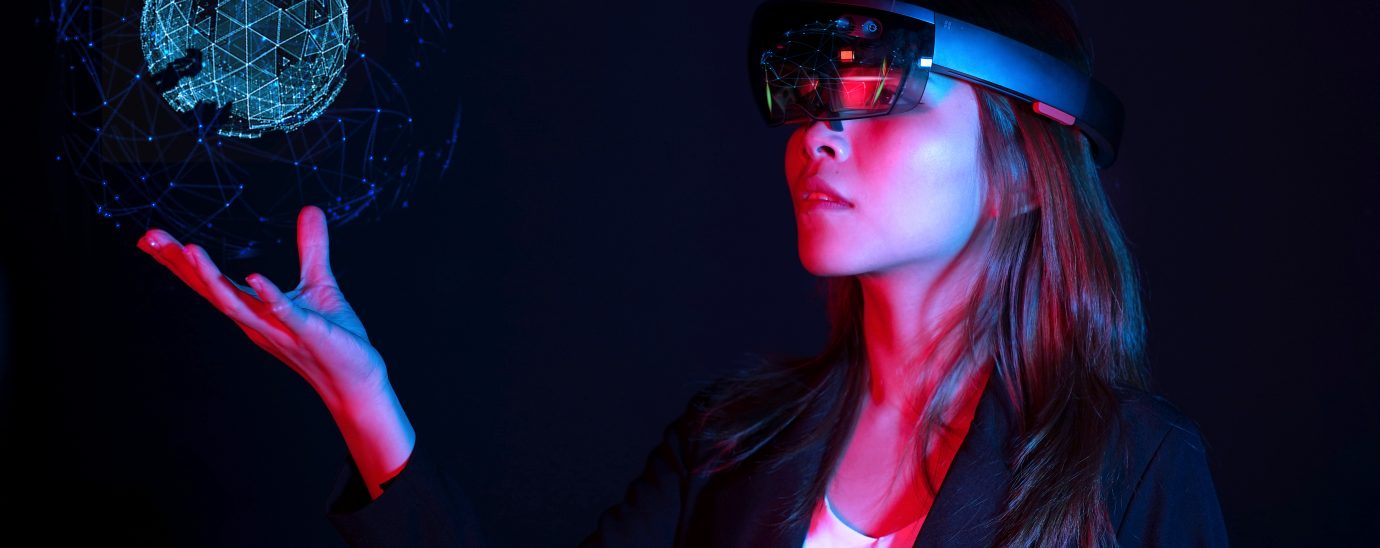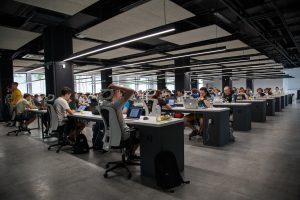Could immersive technology be the secret weapon to transforming business efficiencies?

Greg Roach, CTO of Spinview, discusses how immersive technology enables businesses to test current processes, run synthetic scenarios, access insights and data, thereby allowing them to make better decisions, enhance operations, and drive higher efficiencies.
Immersive technology is gold dust when it comes to empowering better decision-making, bringing people together more effectively and improving business efficiencies. Yet, it remains an unfamiliar term to many business leaders. So, what is it and how can it be used to transform your business?
In short, Virtual Reality (VR), Augmented Reality (AR) or Extended Reality (XR) are technologies for experiencing data and information in the same ways we do the real world; they engage more of our senses, let us use our innate spatial and situational awareness, and activate the visual processing centers of our brains.
They explode information beyond the flat 2-dimensional bounds of the screen, and wrap it around us, immersing us in it and allowing us to understand it in new ways.
Immersive technologies powerfully unlock the value of data by enabling us to contextually visualise information from multiple data feeds in relation to their environment: transforming information into insight. They allow businesses to digitally represent spaces, assets and products in order to explore relationships, pioneer new concepts, optimise processes, and develop a competitive edge like never before.
With these new capabilities, businesses can enhance operations, meet environmental targets and drive higher efficiencies. You might be saying “all this sounds great, but how does it work?”
Using data-rich twins to optimise business operations and decision-making
By looking to data-rich digital twins that provide a detailed and accessible visual recreation of a facility – for instance, a building, office, road, train platform or mine – organisations gain accurate and volumetric versions of real-world counterparts. These twins are combined with data from multiple sources that allow businesses to access, understand, and share information using immersive technologies.
These digital twins can be used to optimise business operations and improve efficiencies – allowing leaders to enable better collaboration, automate and test existing processes, and realize insights. Users can explore and interact with actionable data to test operations and run different scenarios in a way that anyone in a business is able to understand.
When data is accessible in an intuitive three-dimensional medium, users can comprehend the information more easily, be more engaged, and make better-informed decisions.
Digital twins are particularly effective in the “built environment” where buildings can be replicated virtually and analysed for faults and discrepancies through the collection of both historical and real-time data. These twins are a valuable tool in troubleshooting, and help organisations make better-informed decisions based on accurate high-quality data.
And by using immersive technology, businesses have high-fidelity remote access to virtualized sites from anywhere in the world; saving time, resources and funds, while reducing the safety risks of site visits and the environmental impact of travel.
Helping businesses meet environmental targets
Speaking of environmental impacts, sustainability and ESG remain at the forefront of the corporate agenda. In fact, as of 2019, it is actually a legal requirement for businesses to report and provide full disclosure of the impact their business has on the environment. The UN’s recent dire climate report has created an even greater sense of urgency.
Organisations setting targets to advance ESG goals without a data-driven understanding of their status quo, are setting themselves up for failure. It’s wonderful that so many businesses have publicly stated their aims to cut their carbon impact by say 2030, but to actually realize this, corporations must know their starting point.
Fortunately, technology can provide organisations with a clear data baseline, and accurate knowledge of their spaces, which can then be used to track and monitor all future activity. Importantly, a reliable baseline offers a holistic snapshot against which pollutant levels and other environmental impacts can be measured, and used to set achievable sustainability targets and effectively report on them.
By implementing an environmental emissions data capture device, a multi-sensor unit called “Tracer”, businesses gain an accurate picture of carbon emissions, pollutants and particulate matter in the environment. Tracer captures not only the baseline status, but ongoing data over time, so a company can quantify their progress towards net zero, and track the impact of remediation processes and technologies.
Once an accurate baseline is established, it can then be integrated into a digital twin which will project a realistic representation of the past and present state of a space – allowing businesses to forecast or predict future potential scenarios.
Facilitating communication and collaboration during the pandemic
During the pandemic, remote access and management of spaces became paramount to many businesses. With the help of immersive technology, organisations have been able to adapt to a suddenly transformed business world.
A digital twin is a key element of a remote-first strategy – it allows you to communicate, manage and automate your processes. Companies can maintain a sense of physical presence even in the face of mandated isolation and are still able to share and explore their space with anyone – from internal stakeholders to suppliers to end customers and users.
We’ve seen lockdown measures significantly accelerate the roll-out of immersive technology, forcing businesses to re-examine outdated approaches to work, sales and services.
We’ve also seen a much greater trend toward virtualization, remote work, and reliance on digital tools as businesses change tactics and look to immersive technology to provide solutions. From facilitating remote collaboration to aiding visualization of data, the use of AR, XR and VR has accelerated among a multitude of industries during the pandemic.
In summary
Over the past 18 months many businesses’ have been forced to rapidly overhaul their legacy processes, particularly as sustainability and flexible working have become such dominant forces. Now in 2021, immersive technologies are at the forefront of innovation and companies looking to remain competitive must recognise the need to invest in it. From retail to manufacturing, communication to infrastructure, the extent to which immersive technology is pioneering a new business landscape is simply outstanding.
READ MORE:
- The top IT trends to come out in 2021
- The evolution of VR and AR
- Is ‘click and mortar’ the answer to future success for pure-play retailers?
- Facebook to undergo rebrand following whistleblowing and metaverse news
The combination of immersive technology and volumetric data provides businesses with powerful new tools to navigate these challenging times; allowing them to better understand where their businesses are, where they’re going, and how best to get there.
For more news from Top Business Tech, don’t forget to subscribe to our daily bulletin!
